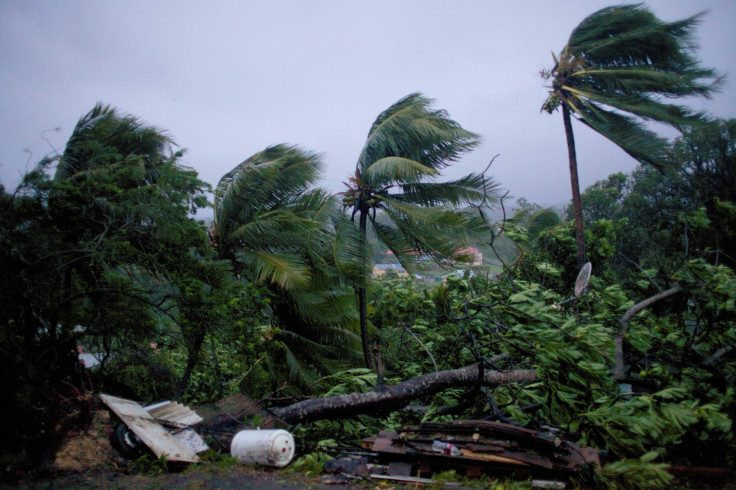Hurricane Maria Tears Through Dominica: Photos And Videos Of Storm’s Wrath

Hurricane Maria tore through the island of Dominica Monday night, the storm’s first landfall. Maria was a Category 5 when it hit Dominica, slowed to Category 4 but became a Category 5 again Tuesday morning, according to the National Hurricane Center.
Sparking wires as Maria enters Dominica. @LeeGoldbergABC7 @ABC @ABC7NY @Ginger_Zee pic.twitter.com/t8b876WbRy
— Rebecca Messa (@Rebecca_Messa) September 19, 2017
Authorities on Dominica are attempting to assess the damage caused by Maria. Around 73,000 people live on the island.
“Initial reports are of widespread devastation,” said the island nation’s Prime Minister Roosevelt Skerrit on Facebook. “So far we have lost all what money can buy and replace. My greatest fear for the morning is that we will wake to news of serious physical injury and possible deaths as a result of likely landslides triggered by persistent rains.”
Video #hurricane #maria after hits #Dominica #Huracan #Maria
— Theworldface (@the_worldface) September 19, 2017
pic.twitter.com/RMbtN6RjtK #Theworldface
Skerrit said he is focused more on his people.
“I am honestly not preoccupied with physical damage at this time, because it is devastating … indeed, mind boggling,” said Skerritt.
.@_gkuster en #Periscope: Vents toujours forts sur Fort-de-France #Maria https://t.co/CVeYGnIGDU transmisión en vivo de la isla dominica
— PUMBA (@nachoosc) September 19, 2017
The Prime Minister himself had to be rescued from the storm.
“My roof is gone. I am at the complete mercy of the hurricane. House is flooding,” said Skerritt on Facebook before confirming he had been rescued.
#Dominica https://t.co/hYYiHQhQaA
— Breaking News (@newnewspage) September 19, 2017
Dominica missed most of the brunt of Hurricane Irma which had already caused widespread havoc in the Caribbean earlier this month. Many people from nearby St. Martin were seeking refuge on Dominica after their island was hit by Irma.
Yessa Maria. pic.twitter.com/7f55GBUwHt
— Aliyah B ___ (@ahleeyuhhh) September 18, 2017
Maria next heads towards Puerto Rico and the U.S. and British Virgin Islands who are bracing for another historic storm.
And so it begins... Hello Maria pic.twitter.com/nkMClRf4w2
— Q (@qulizer) September 18, 2017
© Copyright IBTimes 2025. All rights reserved.





















